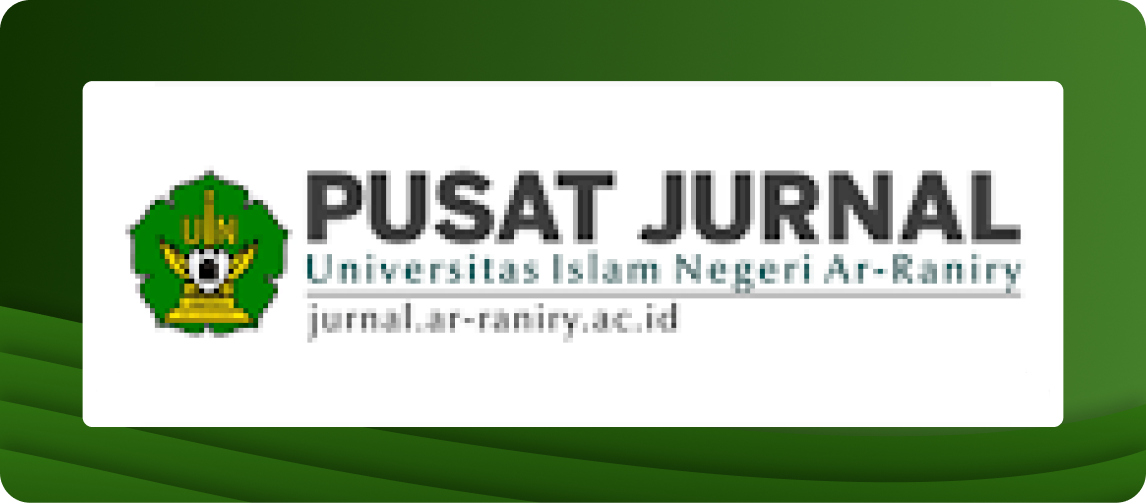Social Capital and Family Resilience to The Pandemic
A Systematic Review in the Contemporary World
DOI:
https://doi.org/10.22373/rj290a90Keywords:
Social capital, community resilience, pandemic, systematic literature review, social studiesAbstract
The management of large-scale societal crises is often impeded by a complex interplay of factors, yet the strategic role of social capital in mitigating such unforeseen global challenges remains inadequately conceptualized. This study aims to systematically examine the contribution of social constitutive capital to the development of family resilience during the pandemic in the contemporary world. Employing a Systematic Literature Review (SLR) methodology, this research analyzed 20 pertinent articles sourced from the Scopus database. The results delineate a multifaceted typology of contributions: social capital functions through direct mechanisms, as a mediating variable alongside other factors, and through indirect pathways. The analysis establishes that social capital (operationalized through trust, networks, norms, and social organization) served as a fundamental pillar of family resilience. Its efficacy was significantly amplified when synergized with local belief systems, technological adoption, entrepreneurial initiatives, and institutional support. Furthermore, social capital acted as a critical mediator in enhancing relational capacities within marginalized demographics. A cross-national analysis of 27 countries highlighted the pivotal role of social trust in alleviating psychological distress, thereby bolstering collective resilience. Conversely, the study also revealed that the impact of social capital on individual resilience was comparatively less significant than that of socioeconomic status, demographic vulnerability, and robust physical infrastructure. These findings provide a seminal framework for understanding the multidimensional utility of social capital in crisis response.
References
Journals and Books
Adelinejad, F., et.al., “The Effect of Social Capital on the Mental Health of the University Students during the Covid-19 Pandemic with the Mediation of the Resilience Variable.” Health in Emergencies & Disasters Quarterly 8, no. 1 (2022). https://doi.org/10.32598/hdq.8.1.419.2.
Aldrich, Daniel P., and Michelle A. Meyer. “Social Capital and Community Resilience.” American Behavioral Scientist 59, no. 2 (2015). https://doi.org/10.1177/0002764214550299.
Aman-Ullah, Attia, et.al., “Human Capital and Organizational Performance: A Moderation Study through Innovative Leadership.” Journal of Innovation & Knowledge 7, no. 4 (2022). https://doi.org/10.1016/j.jik.2022.100261.
Ayu, Rizqa Febry, and Khaeruddin Kiramang. “The Family’s Roles in the Effects of Working from Home During the Covid-19 Pandemic on Children (A Case Study of Families in Banda Aceh City).” El-Usrah: Jurnal Hukum Keluarga 6, no. 1 (2023). https://doi.org/10.22373/ujhk.v6i1.11959.
Behera, J. K. “Role of Social Capital in Disaster Risk Management: A Theoretical Perspective in Special Reference to Odisha, India.” International Journal of Environmental Science and Technology 20, no. 3 (2023). https://doi.org/10.1007/s13762-021-03735-y.
Bhaskara, G.I., and V. Filimonau. “The Covid-19 Pandemic and Organisational Learning for Disaster Planning and Management: A Perspective of Tourism Businesses from a Destination Prone to Consecutive Disasters.” Journal of Hospitality and Tourism Management 46 (2021). https://doi.org/10.1016/j.jhtm.2021.01.011.
Carter, E.D., and M.L. Cordero. “Salir Adelante: Social Capital and Resilience during the Covid-19 Pandemic in Argentina.” Health & Place 77 (2022). https://doi.org/10.1016/j.healthplace.2022.102870.
Cedergren, A., and H. Hassel. “Building Organizational Adaptive Capacity in the Face of Crisis: Lessons from a Public Sector Case Study.” International Journal of Disaster Risk Reduction 100 (2024). https://doi.org/10.1016/j.ijdrr.2023.104235.
Chingombe, W., and H. Musarandega. “From the Cyclone Idai Disaster to the Covid-19 Pandemic: An Account of Inadvertent Social Capital Enhancement in Eastern Chimanimani, Zimbabwe.” Jàmbá Journal of Disaster Risk Studies 13, no. 1 (2021). https://doi.org/10.4102/jamba.v13i1.1068.
Dauner, K.N., and N.A. Wilmot. “Did States with More Social Capital Pre-Pandemic Offer Mental Health Protection during the Covid-19 Pandemic? A Cross-Sectional View.” Frontiers in Public Health 10 (2022): 947569. https://doi.org/10.3389/fpubh.2022.947569.
Fiordelisi, F., G. Galloppo, and G. Lattanzio. “Where Does Corporate Social Capital Matter the Most? Evidence From the Covid-19 Crisis.” Finance Research Letters 47 (2022). https://doi.org/10.1016/j.frl.2021.102538.
Grandpré, A.D., et.al., “Soft Adaptation: The Role of Social Capital in Building Resilient Agricultural Landscapes.” Frontiers in Agronomy, (2022). https://doi.org/10.3389/fagro.2022.980888.
Hardiati, E., and S.Y. Murtiwidayanti. “Social organization as social capital in local community empowerment.” Jurnal Penelitian Kesejahteraan Sosial 14, no. 4 (2015). https://doi.org/10.31105/jpks.v14i4.1337.
Herdiansyah, H. “Smart City Based on Community Empowerment, Social Capital, and Public Trust in Urban Areas.” Global Journal of Environmental Science and Management 9, no. 1 (2023). https://doi.org/10.22034/gjesm.2023.01.09.
Imai, H., and Y. Ji. “Social Capital, Innovation, and Local Resilience: Tokyo Neighbourhood in Times of Crisis.” Asian Studies 9, no. 1 (2021). https://doi.org/10.4312/as.2021.9.1.283-313.
Jones, S., A. Krzywoszynska, and D. Maye. “Resilience and Transformation: Lessons from the UK Local Food Sector in the Covid‐19 Pandemic.” The Geographical Journal 188, no. 2 (2022). https://doi.org/10.1111/geoj.12428.
Kan, K., and H.B. Ku. “Social Organizations in Rural China: From Autonomy to Governance.” The China Quarterly 256 (2023). https://doi.org/10.1017/S0305741023000668.
Keam, H., and S. Miokovic. “Social Capital: Creating Connections to Foster Community Innovation.” Social Innovations Journal 17 (2023). https://socialinnovationsjournal.com/index.php/sij/article/view/5593.
Khan, E.A., et.al., “Editorial: Covid-19 and Entrepreneurial Mindset.” Frontiers in Psychology 13 (2022). https://doi.org/10.3389/fpsyg.2022.1084783.
Lau, P.Y.F. “Fighting Covid-19: Social Capital and Community Mobilisation in Hong Kong.” International Journal of Sociology and Social Policy 40, no. 9/10 (2020): 1059–67. https://doi.org/10.1108/IJSSP-08-2020-0377.
Mokti, H., N. Kamri, and M.A.W.F. Mohd Balwi. “Halal Food Quality: An Analysis of Relevant Guidelines and Regulations in Malaysia.” Journal of Fatwa Management and Research 27 (2022). https://doi.org/10.33102/jfatwa.vol27no2-SE.482.
Norton, A. “Filling the 20 per Cent Gap: Francis Fukuyama on Trust and Social Capital.” Agenda: A Journal of Policy Analysis and Reform 3, no. 3 (1996). https://www.jstor.org/stable/43199387.
Oskooii, N., and J. Ajali. “Social capital and social entrepreneurship and innovation culture.” Innovative Marketing 13, no. 3 (2017). https://doi.org/10.21511/im.13(3).2017.05.
Page, M.J., et al. “The PRISMA 2020 Statement: An Updated Guideline for Reporting Systematic Reviews.” BMJ (Clinical Research Ed 372, n71 (2021). https://doi.org/10.1136/bmj.n71.
Partelow, S. “Social Capital and Community Disaster Resilience: Post-Earthquake Tourism Recovery on Gili Trawangan, Indonesia.” Sustainability Science 16, no. 1 (2021). https://doi.org/10.1007/s11625-020-00854-2.
Pati, D., and L.N. Lorusso. “How to Write a Systematic Review of the Literature.” HERD: Health Environments Research & Design Journal 11, no. 1 (2018). https://doi.org/10.1177/1937586717747384.
Paul, C.J., et.al., “Social Capital, Trust, and Adaptation to Climate Change: Evidence from Rural Ethiopia.” Global Environmental Change 36 (2016). https://doi.org/10.1016/j.gloenvcha.2015.12.003.
Pierel, E., J. Helgeson, and K. Dow. “Intersections of Small Business Mobility, Adaptive Capacity, and Resilience during Crises.” International Journal of Mass Emergencies & Disasters 41, no. 1 (2023). https://doi.org/10.1177/02807270231173650.
Prayitno, G., et.al., “Social Capital of Pujon Kidul Communities in Supporting the Development of the Covid-19 Resilience Village.” International Journal of Sustainable Development and Planning 17, no. 1 (2022). https://doi.org/10.18280/ijsdp.170125.
Prayitno, G., et.al. “Structural Model of Community Social Capital for Enhancing Rural Communities Adaptation against the Covid-19 Pandemic: Empirical Evidence from Pujon Kidul Tourism Village, Malang Regency, Indonesia.” Sustainability 14, no. 19 (2022). https://doi.org/10.3390/su141912949.
Prayitno, G., et.al., “Structural Equation Model the Development of the Covid 19 Community Resilience in Pujon Kidul Tourism Village.” GeoJournal of Tourism and Geosites 43, no. 3 (2022). https://doi.org/10.30892/gtg.43312-906.
Putri, S.A., et.al., “Strengthening Social Capital through Digital Platform: Neighborhood Community in DKI Jakarta.” Masyarakat: Jurnal Sosiologi 28, no. 2 (2023). https://doi.org/10.7454/MJS.v28i2.13567.
Qadriina, H.I., et.al., “Does Social Capital Play an Important Role in Disaster Recovery?: A Qualitative Study of the 2022 Cianjur Earthquake in Indonesia.” Journal of Population and Social Studies [JPSS 33 (2024). https://so03.tci-thaijo.org/index.php/jpss/article/view/273487.
Rahmikawati, Rahmikawati., et.al., “Human Capital and How It Affects the Performance of an Organization.” Proceedings of International Conference on Multidiciplinary Research 5, no. 2 (2022). https://doi.org/10.32672/pic-mr.v5i2.5415.
Riniati, Riniati., et.al., “The Role of Social Capital on Information and Communication Technology Based Empowerment (Case Study in Kertosari Village, Pasrujambe District, Lumajang Regency.” International Journal of Social and Local Economic Governance 3, no. 2 (2017). https://ijleg.ub.ac.id/index.php/ijleg/article/view/81.
Sherblom, J.C., et.al., “Resilience, Identity Tension, Hope, Social Capital, and Psychological Stress during a Pandemic.” Adversity and Resilience Science 3, no. 1 (2022): 37–51. https://doi.org/10.1007/s42844-021-00049-3.
Sopha, B.M., A. Arvianto, and B. Tjahjono. “Survival Strategies of Traditional Retailers during the Covid-19 Pandemic: Some Insights from a Developing Country.” Journal of Industrial Engineering and Management 15, no. 2 (2022). https://doi.org/10.3926/jiem.3698.
Suriyankietkaew, Suriyankietkaew., et.al., “Sustainable Leadership Practices and Competencies of Smes for Sustainability and Resilience: A Community-Based Social Enterprise Study.” Sustainability 14, no. 10 (2022): 5762. https://doi.org/10.3390/su14105762.
Tubadji, A. “Culture and Mental Health Resilience in Times of Covid-19.” Journal of Population Economics 34 (2021). https://doi.org/10.1007/s00148-021-00840-7.
Veno, E., P. Bala, and K. Egay. “Community Resilience in the Face of Covid-19 Pandemic: The Case of Nyegol of Upper Bengoh.” Journal of Sustainability Science and Management 17, no. 1 (2022). https://doi.org/10.46754/jssm.2022.01.002.
Wang, C., et.al., “Social Capital, Technological Empowerment, and Resilience in Rural China.” International Journal of Environmental Research and Public Health 18, no. 22 (2021). https://doi.org/10.3390/ijerph182211883.
Wu, C. “Social Capital and Covid-19: A Multidimensional and Multilevel Approach.” Chinese Sociological Review 53, no. 1 (2021). https://doi.org/10.1080/21620555.2020.1814139.
Xie, L., J. Pinto, and B. Zhong. “Building Community Resilience on Social Media to Help Recover from the Covid-19 Pandemic.” Computers in Human Behavior 134 (2022). https://doi.org/10.1016/j.chb.2022.107294.
Xiong, A., and Y. Li. “The Role of Social Capital in Building Community Disaster Resilience –Empirical Evidences from Rural China.” International Journal of Disaster Risk Reduction 110 (2024). https://doi.org/10.1016/j.ijdrr.2024.104623.
Xu, H., C. Zhang, and Y. Huang. “Social Trust, Social Capital, and Subjective Well-Being of Rural Residents: Micro-Empirical Evidence Based on the Chinese General Social Survey (CGSS.” Humanities and Social Sciences Communications 10, no. 1 (2023). https://doi.org/10.1057/s41599-023-01532-1.
Xu, W., L. Xiang, D. Proverbs, and S. Xiong. “The Influence of Covid-19 on Community Disaster Resilience.” International Journal of Environmental Research and Public Health 18, no. 1 (2020). https://doi.org/10.3390/ijerph18010088.
Internet Data
Claridge, T. Introduction to Social Capital Research. Institute for Social Capital, 2010. https://www.socialcapitalresearch.com/literature/introduction-social-capital-research/.
Martikke, S. Social Capital–an Overview. Greater Manchester Center for Voluntary Organisation, 2017. https://www.gmcvo.org.uk/system/files/publications/Social%20Capital%20-%20An%20Overview.pdf.
O.E.C.D. “For Good Measure: Advancing Research on Well-Being Metrics beyond GDP.” Organisation for Economic Co-Operation and Development, 2018. https://www.oecd-ilibrary.org/economics/for-good-measure_9789264307278-en.
Downloads
Published
Versions
- 2025-09-13 (2)
- 2025-09-14 (1)
Issue
Section
License
Copyright (c) 2025 Zulkifli, Nuryaman, Dhea Urfina Zulkifli and Muhamad Fahri

This work is licensed under a Creative Commons Attribution-ShareAlike 4.0 International License.
Authors who publish in El-Usrah: Jurnal Hukum Keluarga agree to the following terms:
Authors retain copyright and grant the journal right of first publication with the work simultaneously licensed Attribution-ShareAlike 4.0 International (CC BY-SA 4.0) that allows others to share the work with an acknowledgment of the work's authorship and initial publication in this journal.
Authors are able to enter into separate, additional contractual arrangements for the non-exclusive distribution of the journal's published version of the work (e.g., post it to an institutional repository or publish it in a book), with an acknowledgment of its initial publication in this journal.
Authors are permitted and encouraged to post their work online (e.g., in institutional repositories or on their website) prior to and during the submission process, as it can lead to productive exchanges, as well as earlier and greater citation of published work. (See The Effect of Open Acces)

















